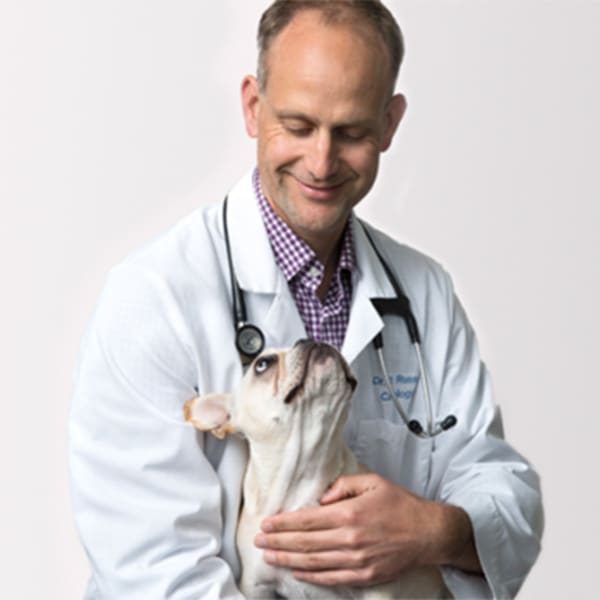How a Board Certified Veterinary Cardiologist Treats Complex Heart Conditions in Pets}
Wiki Article
The Function of Ultrasound and CT Check in Modern Veterinary Practices: Insights From Experienced Professionals
In contemporary veterinary practices, ultrasound and CT scans substantially boost analysis abilities. These imaging methods offer essential understandings right into animal health and wellness, assisting treatment choices. Experienced specialists identify the special advantages of each modality. Ultrasound supplies real-time analyses, while CT scans deliver detailed physiological details. Understanding their duties and applications raises important questions concerning their effect on client outcomes and the future of vet diagnostics. What insights can be obtained from their incorporated usage?Recognizing Ultrasound in Veterinary Medication
Ultrasound is a necessary analysis device in vet medicine, providing a non-invasive technique to picture interior frameworks. This imaging method utilizes high-frequency sound waves to produce real-time photos of organs and tissues, permitting vets to assess conditions without surgical treatment. Usual applications include reviewing the heart, liver, kidneys, and reproductive organs, as well as keeping an eye on pregnancies.The procedure is relatively fast and can be executed in numerous setups, making it an accessible option for veterinarians. Unlike radiography, ultrasound gives thorough info regarding soft tissues and blood circulation, which is crucial for accurate diagnoses.Veterinary specialists count on ultrasound to find irregularities such as tumors, cysts, and liquid build-up. Its ability to assist biopsies and other treatments better improves its utility in scientific method. By offering a reliable and secure method to examine interior anatomy, ultrasound has come to be a foundation of modern vet diagnostics.
The Benefits of CT Checks for Pet Diagnostics
CT scans deal considerable benefits in veterinary diagnostics by giving improved precision in determining inner conditions (CT Scans For Dogs). As a non-invasive imaging technique, they ensure the security and convenience of animals throughout exams. Additionally, CT checks promote a detailed assessment of inner structures, enabling for extra effective therapy preparationEnhanced Diagnostic Precision
Advancements in imaging innovation have actually greatly improved analysis precision in veterinary medicine, especially via the usage of CT scans. These scans offer thorough cross-sectional pictures of an animal's interior frameworks, allowing veterinarians to identify irregularities with accuracy. The high resolution and three-dimensional abilities of CT imaging help with the detection of problems such as lumps, cracks, and inner blood loss that might be missed with standard imaging approaches. In addition, CT scans can assist in pre-surgical planning by providing a detailed sight of physiological relationships. This degree of detail not only improves the accuracy of diagnoses but also aids in tailoring effective treatment plans. Consequently, the integration of CT technology into vet methods is transforming the landscape of animal healthcare, enhancing outcomes for patients.Non-Invasive Imaging Technique
The introduction of non-invasive imaging strategies has actually changed pet diagnostics, with CT scans becoming a prominent tool in vet techniques. These scans give high-resolution, cross-sectional photos of an animal's inner frameworks, allowing veterinarians to analyze intricate problems without the demand for intrusive procedures. The advantages of CT scans include their ability to spot tumors, cracks, and interior bleeding with remarkable accuracy. Additionally, they help with the assessment of soft cells and body organs, enhancing diagnostic abilities. The speed of CT scanning makes it possible for fast decision-making, which is important in emergency situation circumstances. By minimizing tension and pain for the animal, CT scans add to a much more gentle method to diagnostics, inevitably enhancing therapy outcomes and progressing vet care.Comprehensive Internal Assessment
A thorough inner assessment is crucial for precise medical diagnosis and effective therapy in veterinary medication. CT checks offer considerable advantages hereof, providing in-depth cross-sectional images of an animal's inner structures. This sophisticated imaging method improves visualization of complex anatomical areas, making it possible for veterinarians to recognize irregularities such as lumps, fractures, and interior blood loss with greater precision. On top of that, CT scans assist in the assessment of conditions that may be challenging to detect via typical methods. The rate and accuracy of CT imaging additionally add to timely treatments, enhancing person outcomes. As veterinary practices progressively include CT modern technology, the benefits of comprehensive interior evaluations end up being obvious, enhancing the importance of this device in modern veterinary diagnostics.Comparing Ultrasound and CT Imaging Techniques
While both ultrasound and CT imaging serve vital duties in vet diagnostics, each strategy offers unique advantages and restrictions that can influence medical decision-making. Ultrasound is especially valued for its real-time imaging abilities, enabling veterinarians to observe dynamic physiological procedures. This strategy is non-invasive, mobile, and does not include ionizing radiation, making it a much safer choice for both pets and medical professionals. Ultrasound may have constraints in visualizing specific anatomical structures or deep tissues.Conversely, CT imaging gives thorough cross-sectional views of the body, allowing for specific localization of irregularities. It stands out in evaluating facility organs and structures, specifically in the thorax and abdomen. CT scans need sedation or anesthetic in lots of cases and entail exposure to ionizing radiation. Inevitably, the choice in between ultrasound and CT depends upon the specific scientific situation, the area of passion, and the seriousness of the diagnostic demands.Case Researches: Effective Diagnoses Through Imaging
Situation research studies show the significant renovations in analysis precision attained with sophisticated imaging technologies like ultrasound and CT scans in vet methods. These advancements not only boost the detection of different problems but likewise promote timely and reliable therapy plans. Assessing specific situations can highlight the transformative effect of these imaging strategies on veterinary medicine.Diagnostic Accuracy Improvements

Imaging Technology Advancements
As vet imaging technology remains to see this here evolve, its influence on diagnostic abilities ends up being significantly obvious. Recent study highlight the successful application of sophisticated ultrasound and CT scan techniques in determining complicated conditions. As an example, a veterinary center used high-resolution CT scans to identify an unusual form of lung cancer in a canine, which traditional imaging had missed. Likewise, an ultrasound exam exposed an abdominal mass in a cat, prompting prompt medical intervention and a favorable result. These innovations not only enhance analysis accuracy yet likewise enable vets to develop targeted therapy plans. By leveraging advanced imaging modern technologies, vet professionals are considerably boosting individual care, causing more reliable management of numerous health problems in animals.
The Function of Imaging in Emergency Veterinary Treatment
Imaging plays a vital duty in emergency vet care, supplying veterinarians with vital info needed to make fast, enlightened decisions. In immediate circumstances, methods like ultrasound and CT scans make it possible for experts to quickly assess an animal's inner frameworks, determining crucial problems such as internal bleeding, cracks, or organ problems. These imaging modalities enable real-time analyses, assisting in timely interventions that can be life-saving. For example, ultrasound is important for assessing soft cells injuries and conditions like fluid accumulation, while CT checks offer comprehensive photos of intricate anatomical structures, crucial for diagnosing trauma instances. The rate and precision of these imaging techniques enhance the veterinarian's ability to develop efficient therapy plans, making certain the best possible outcomes for their patients. The combination of sophisticated imaging innovations into emergency situation vet methods is not only beneficial yet significantly needed, as it improves analysis abilities and enhances total pet treatment during critical minutes.
Training and Proficiency in Veterinary Imaging
Sophisticated imaging techniques such as ultrasound and CT scans are important for reliable vet care, the successful application of these innovations greatly depends on the training and proficiency of vet specialists. Proficient use of imaging devices calls for comprehensive expertise of anatomy, pathology, and the principles underlying each technique. Vet specialists must undergo specific training to properly analyze imaging outcomes, which is essential for diagnosing conditions and planning treatment.Certifications and continuing education in veterinary imaging boost the skills of experts, allowing them to remain upgraded with technological improvements. Cooperation in between vets and radiologists frequently results in enhanced diagnostic precision, as specialists can provide insights right into intricate learn this here now instances. On top of that, useful experience in dealing with imaging equipment fosters self-confidence in its application. Inevitably, the top quality of vet imaging services is directly associated to the degree of training and proficiency possessed by the specialists making use of these crucial analysis tools.Future Trends in Diagnostic Imaging for Animals
With the rapid advancements in modern technology, vet analysis imaging is poised for substantial development in the coming years. Emerging trends show a change in the direction of even more obtainable and mobile imaging techniques, such as handheld ultrasound tools, which might improve field diagnostics. Additionally, the assimilation of man-made intelligence is anticipated to transform photo evaluation, permitting quicker and extra precise analyses of results.Moreover, innovations in 3D imaging methods and computed tomography will provide veterinarians with even more complete views of pet anatomy, leading to better treatment strategies. Virtual truth technology may additionally play a function in medical planning and education and learning, giving vets an unique point of view on complex cases.As telemedicine remains to expand, remote assessments promoted by diagnostic imaging will certainly end up being more typical, permitting specialists to help basic specialists in real-time. Generally, these trends are readied to improve the performance and effectiveness of veterinary treatment, inevitably improving animal results.Regularly Asked Questions
Exactly How Much Do Ultrasound and CT Scans Expense in Veterinary Facilities?
The costs of ultrasound and CT scans in vet facilities typically range from $300 to $1,500, relying on variables such as location, clinic type, and certain treatments needed for the pet's medical diagnosis and therapy.
Are There Any Type Of Threats Related To Ultrasound and CT Checks for Family Pets?
Ultrasound and CT scans normally position very little threats to animals. Prospective issues consist of sedation reactions and direct exposure to anesthetics. Veterinarians meticulously evaluate each case to alleviate any threats linked with these analysis proceduresThe Length Of Time Do Ultrasound and CT Treatments Normally Take?
Ultrasound treatments typically take around 30 minutes to an hour, depending on the intricacy. CT scans, being even more thorough, normally require thirty minutes to 90 mins, including prep work and recuperation time for the pet dog.Can All Veterinarians Perform Ultrasounds and CT Scans?
Not all vets can perform ultrasounds and CT scans. Specialized training and accreditation are usually needed to assure competency read the full info here in these innovative imaging methods, which may limit their availability to veterinarians with extra certifications and sources.What Sorts Of Pets Profit The Majority Of From These Imaging Techniques?
Particular animal varieties, especially dogs and pet cats, advantage substantially from ultrasound and CT scans. These imaging strategies boost diagnostic accuracy for problems like growths, inner injuries, and body organ irregularities, resulting in improved therapy outcomes and client treatment. The high resolution and three-dimensional capabilities of CT imaging assist in the discovery of problems such as lumps, fractures, and interior bleeding that may be missed out on with traditional imaging methods. Situation researches highlight the considerable enhancements in analysis accuracy attained via sophisticated imaging innovations like ultrasound and CT scans in veterinary practices. Improving analysis accuracy in veterinary practices has actually been significantly helped by developments in imaging technologies such as ultrasound and CT scans. Advanced imaging techniques such as ultrasound and CT scans are essential for reliable vet care, the successful implementation of these technologies greatly depends on the training and competence of vet experts. Vet professionals need to undergo specialized training to properly interpret imaging outcomes, which is vital for identifying problems and planning treatment.Certifications and continuing education and learning in vet imaging boost the abilities of practitioners, allowing them to stay updated with technical improvements.Report this wiki page